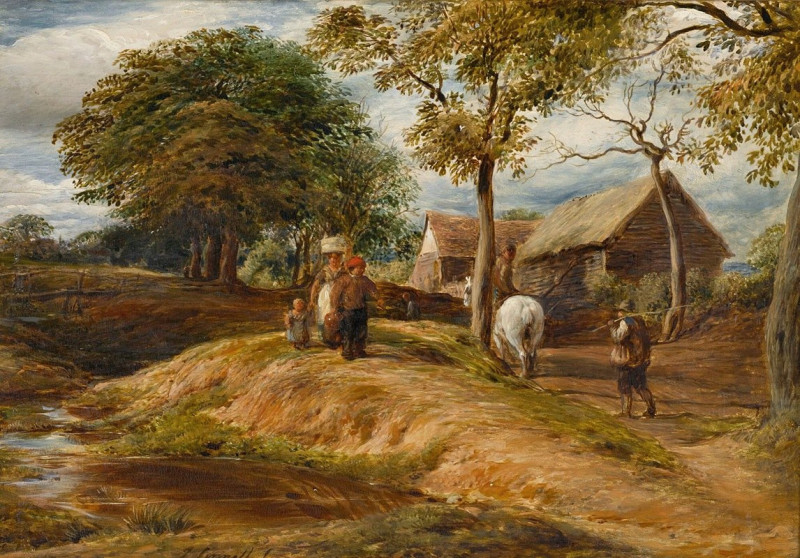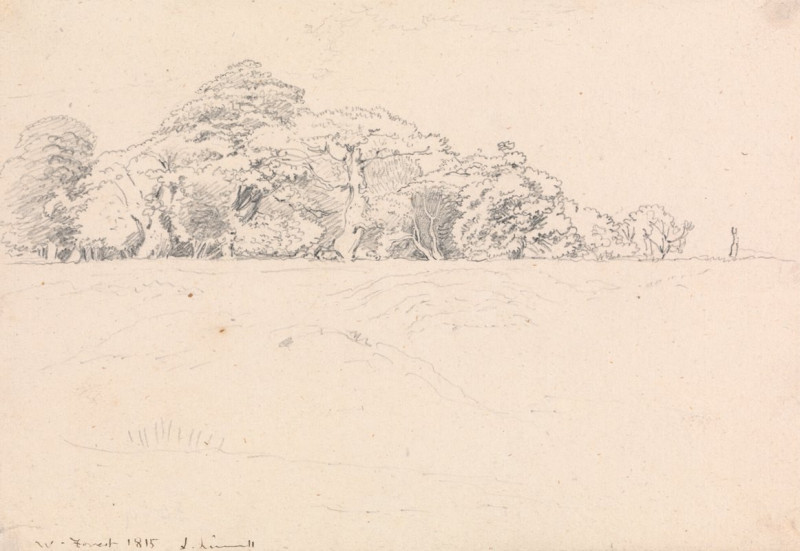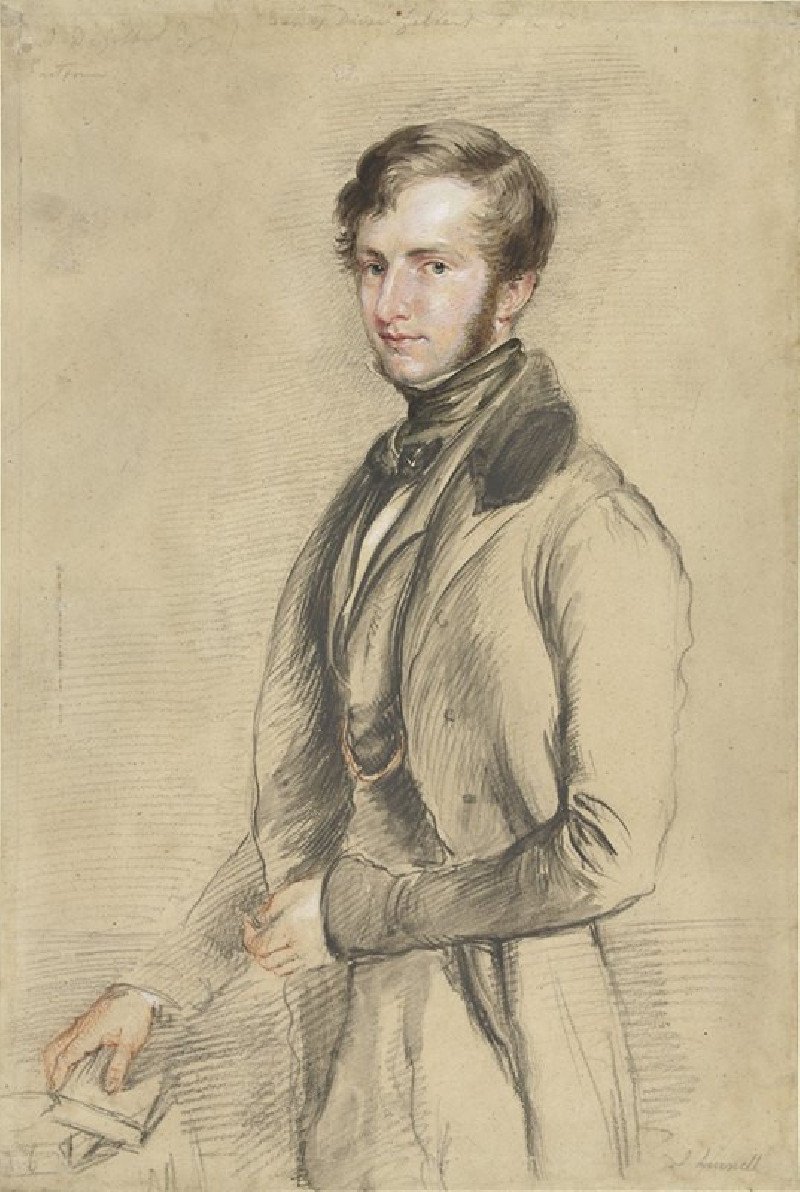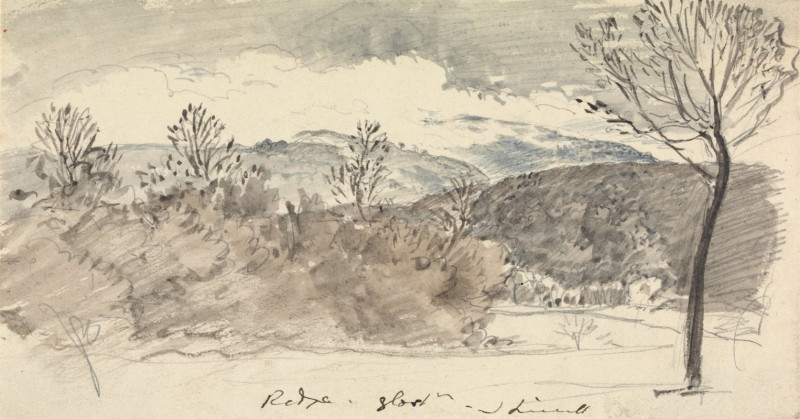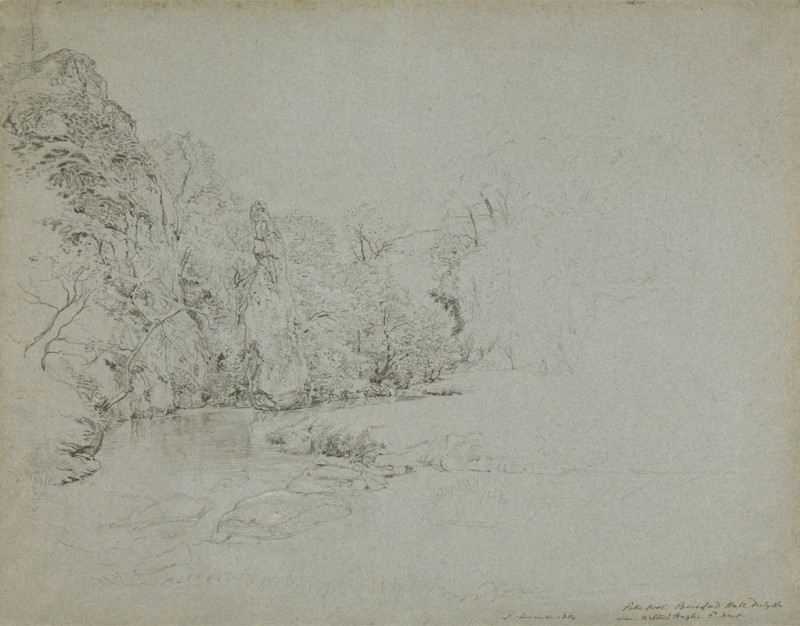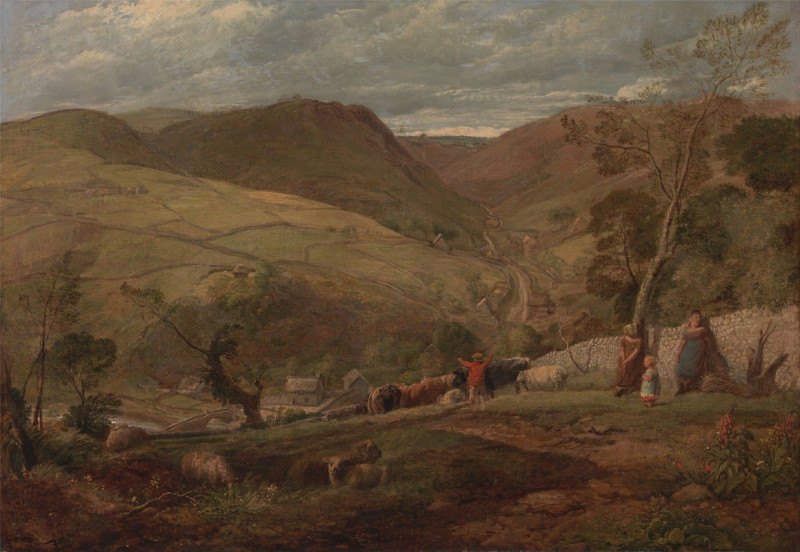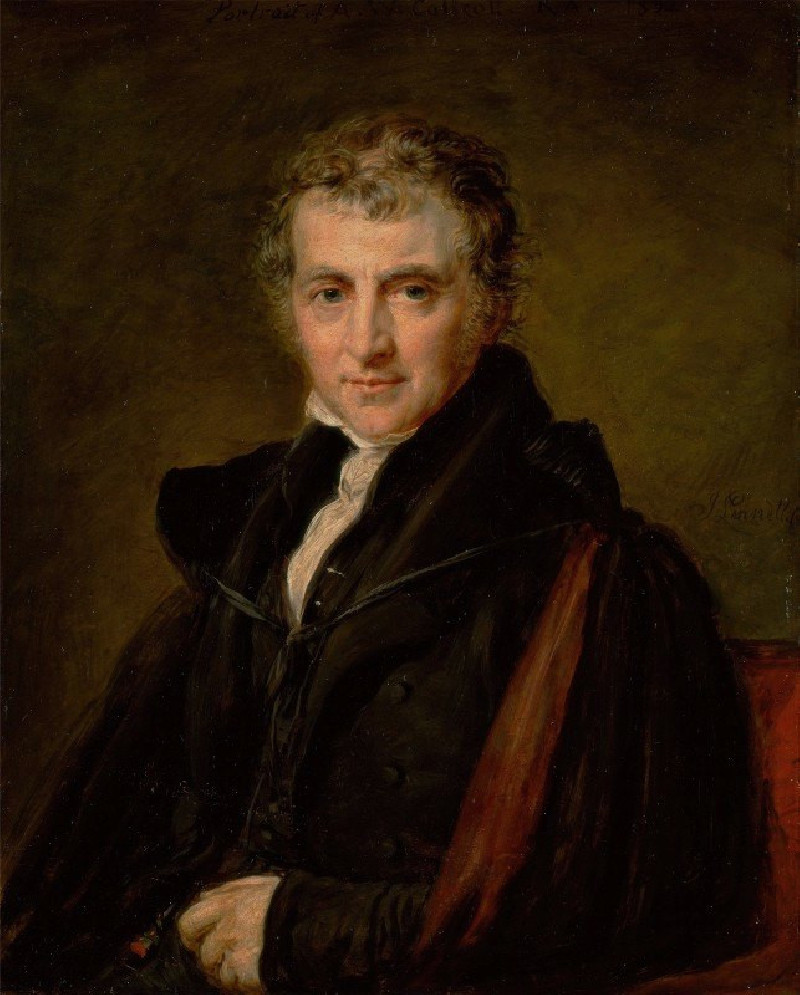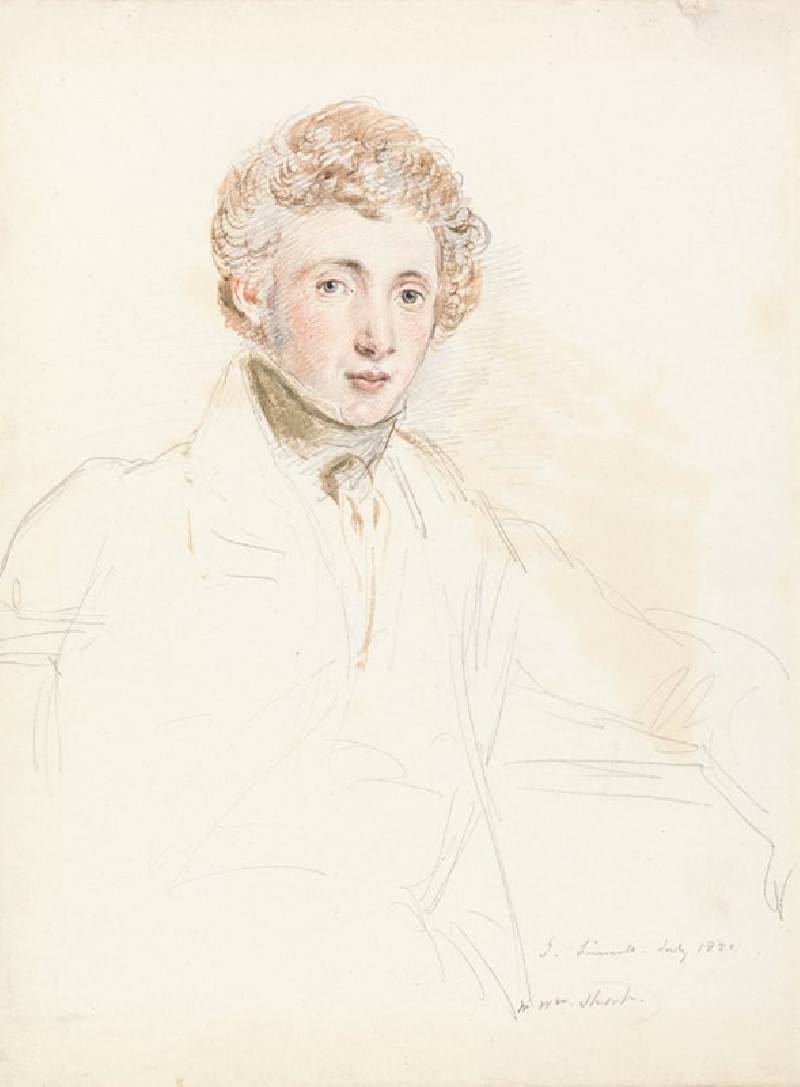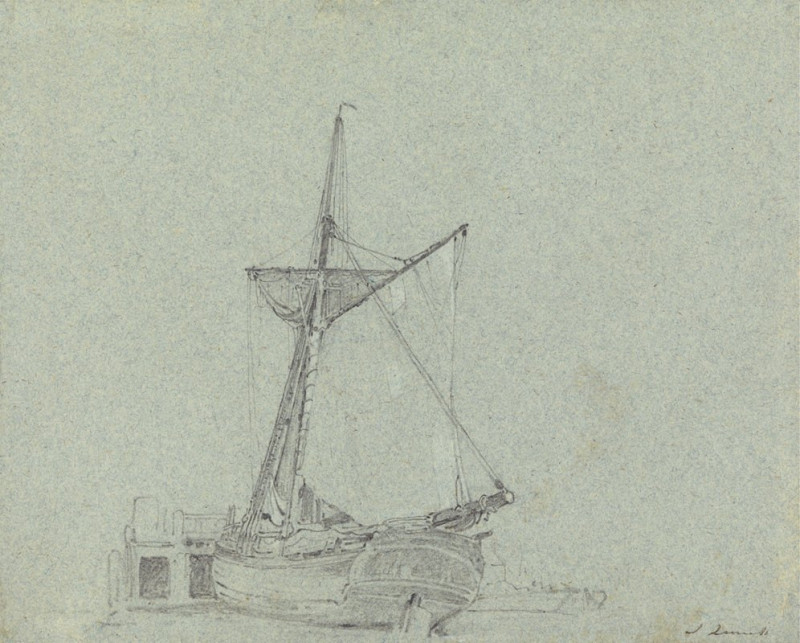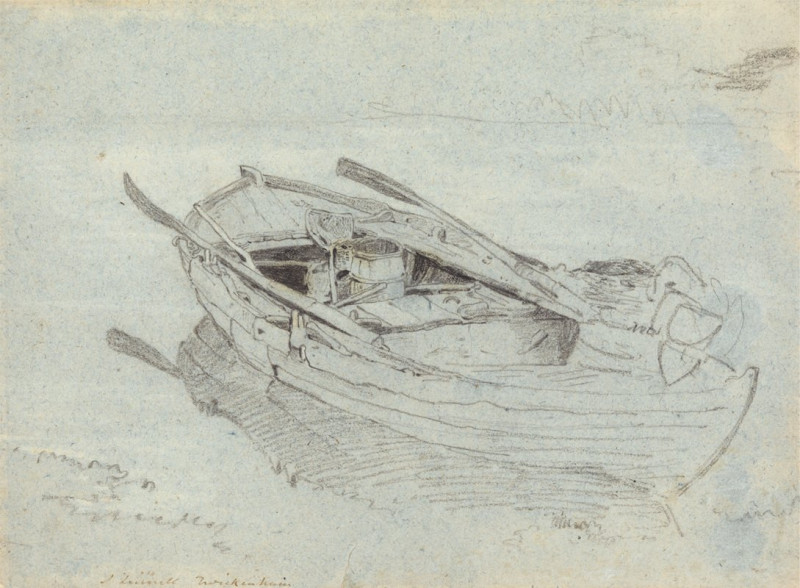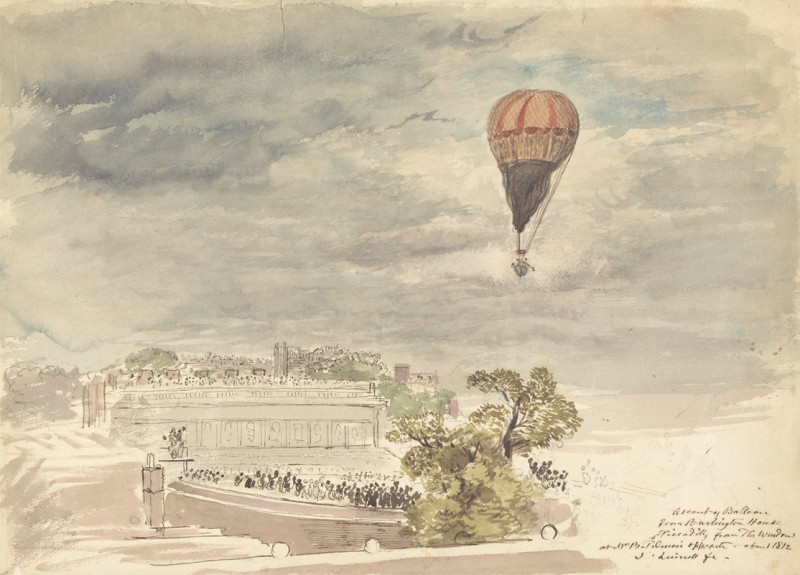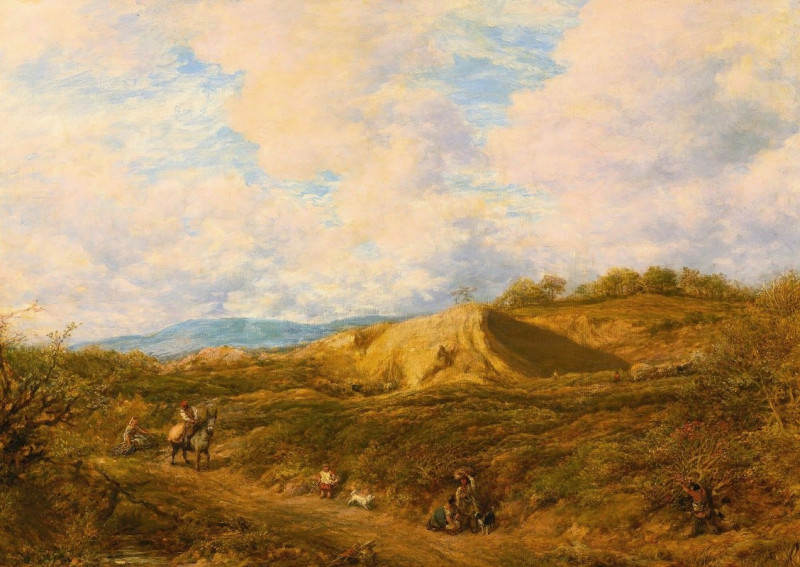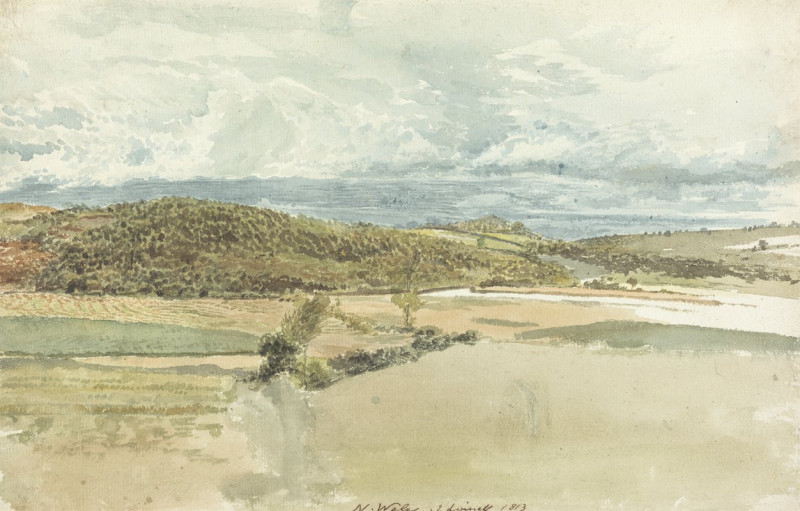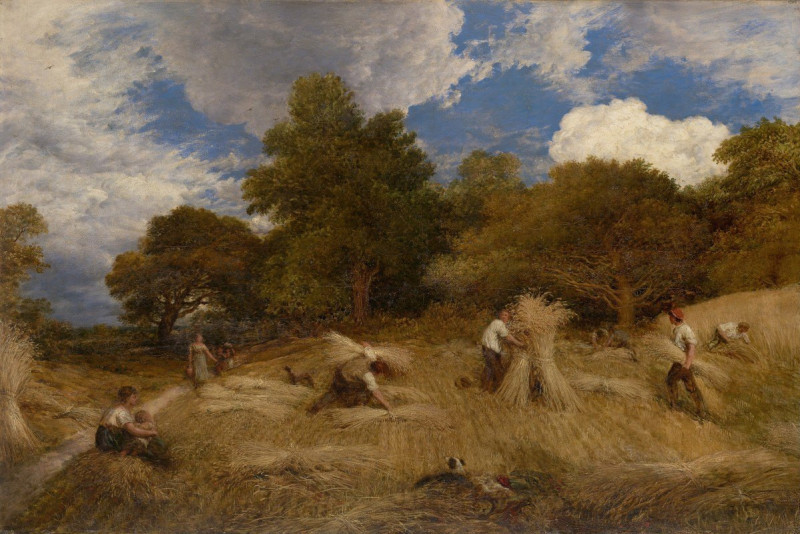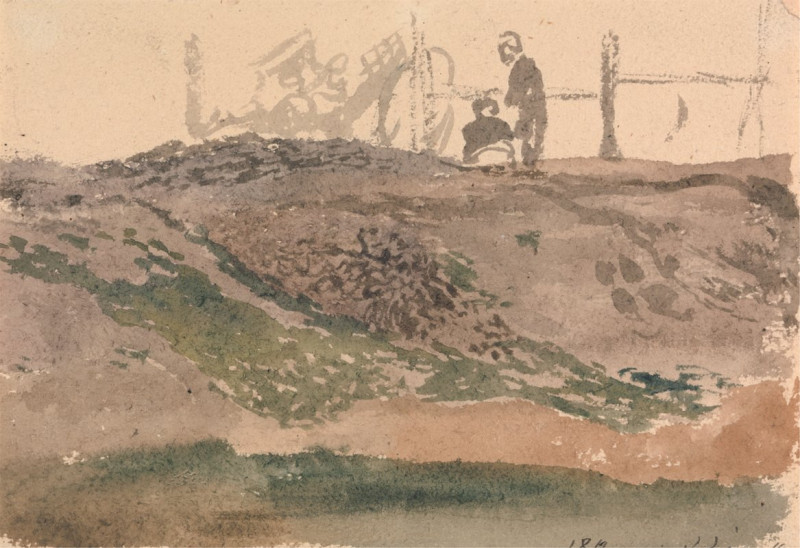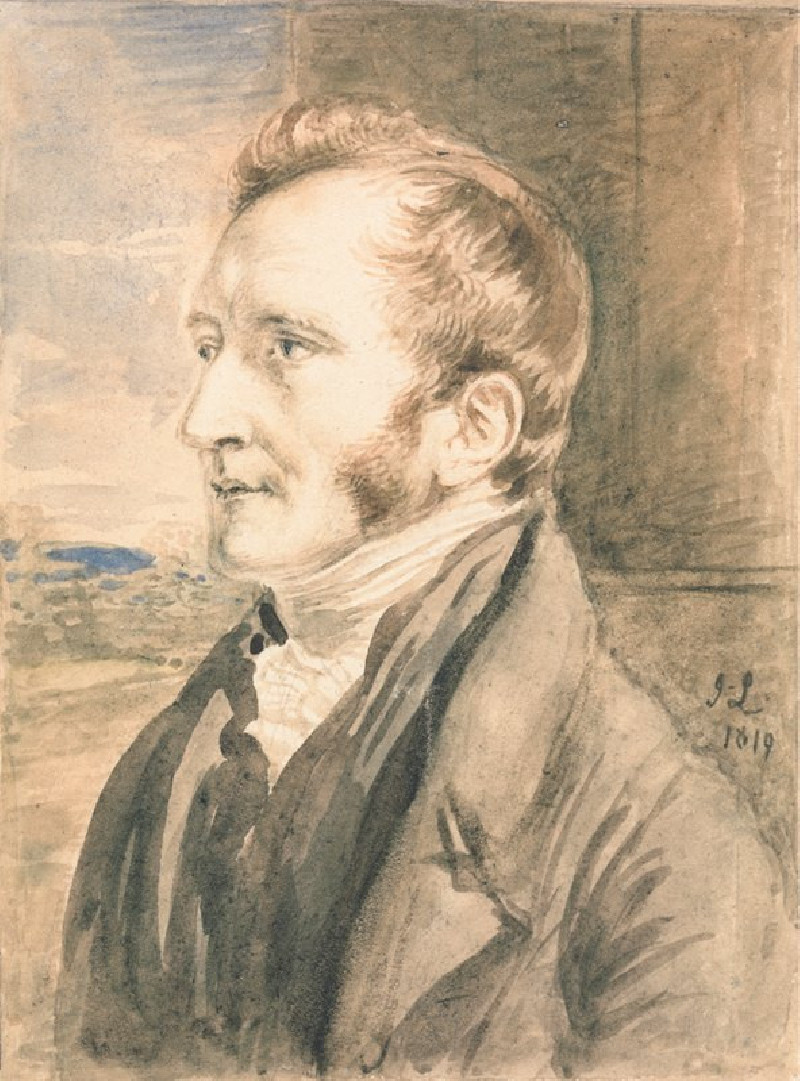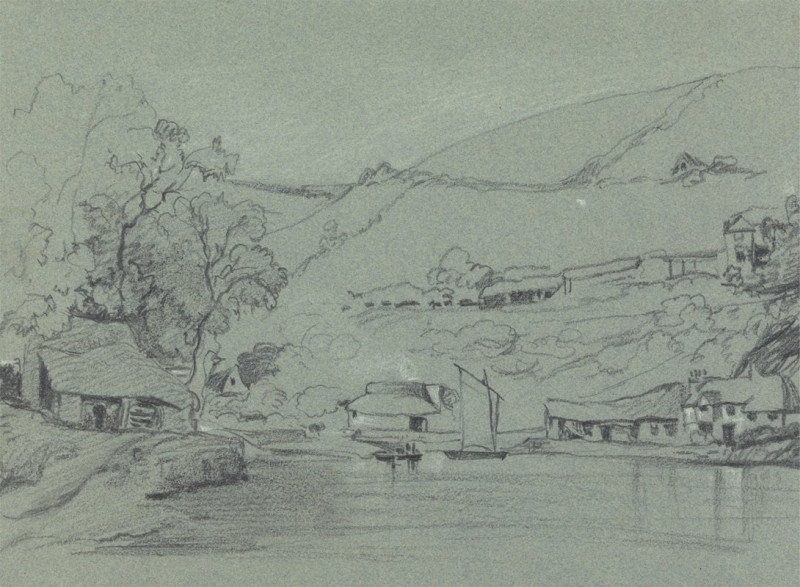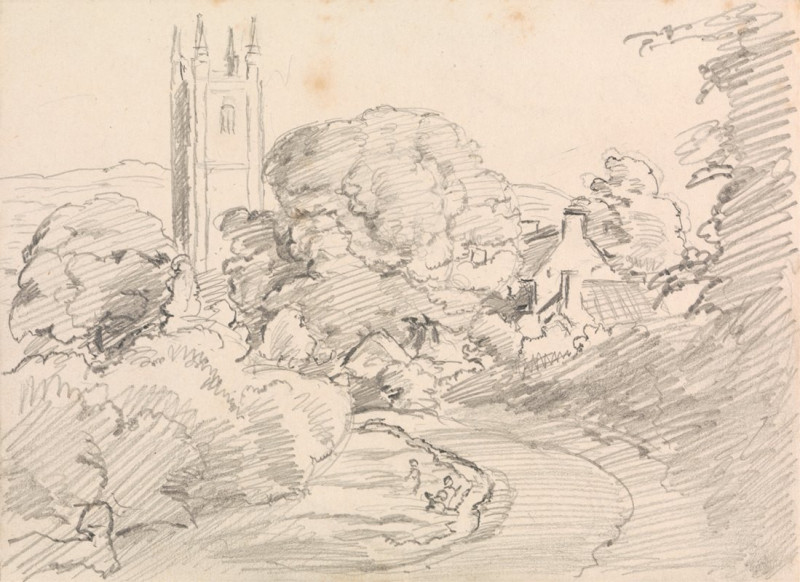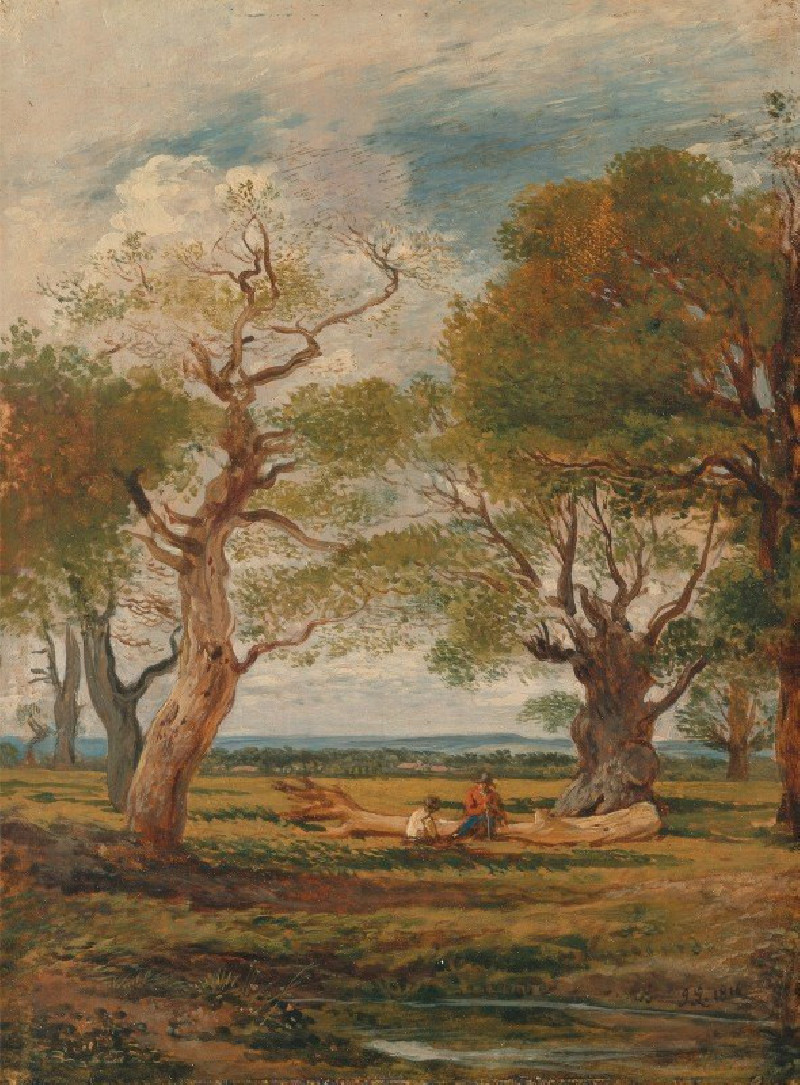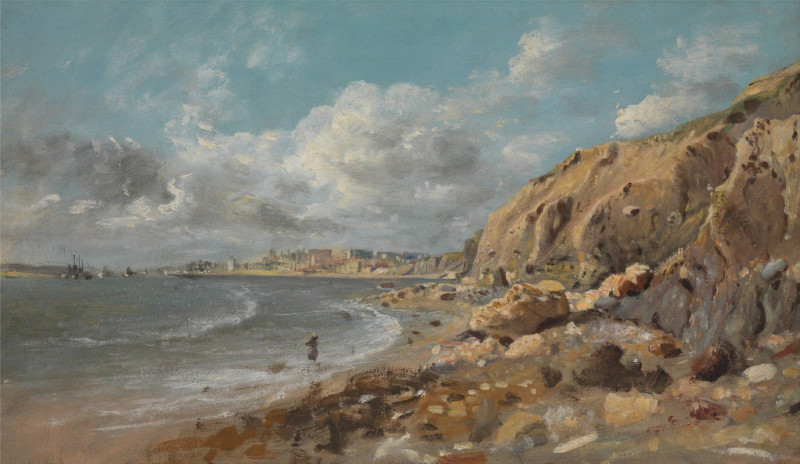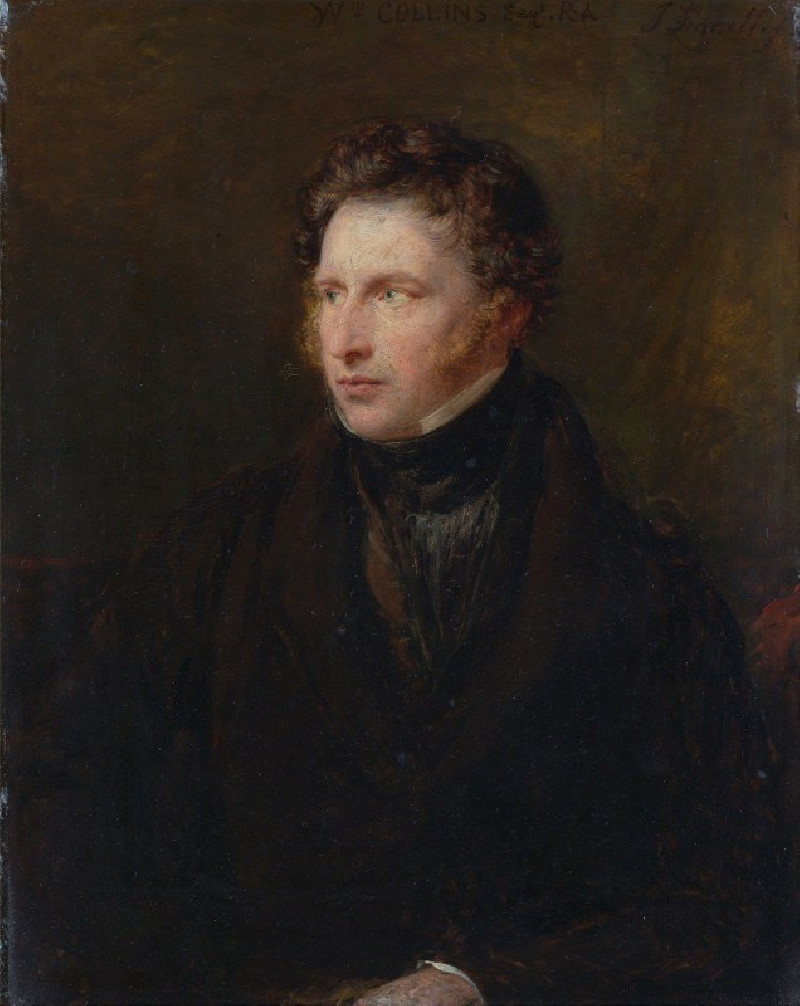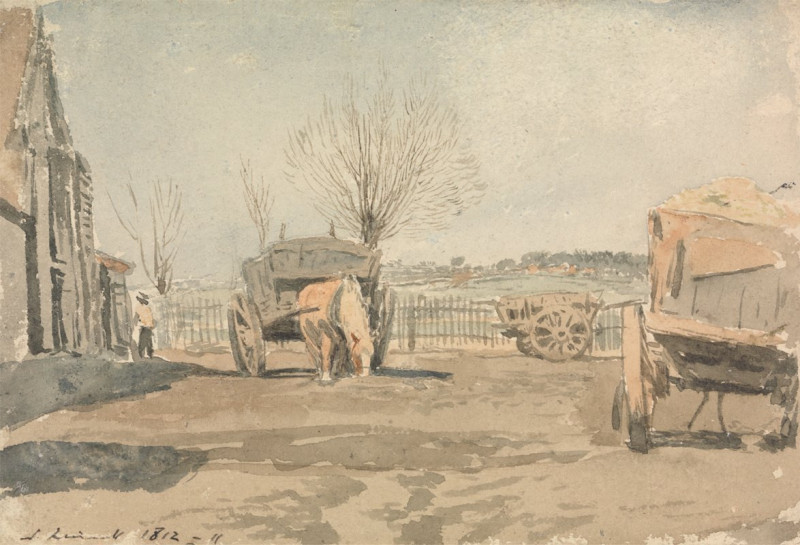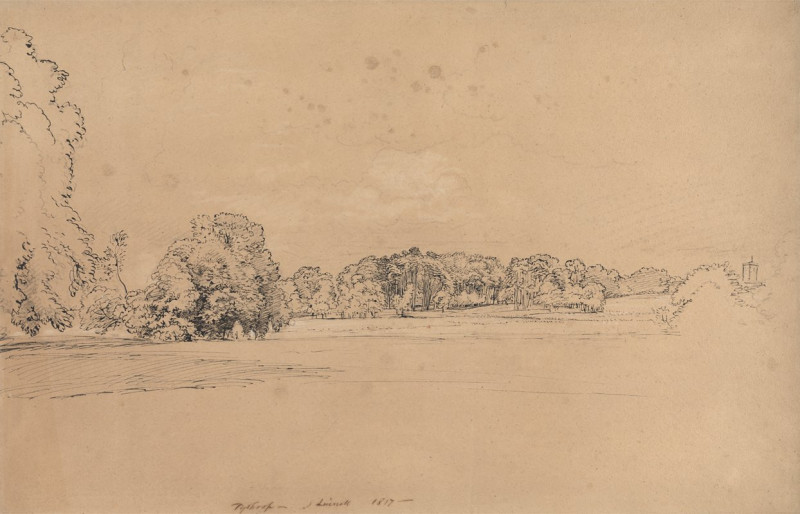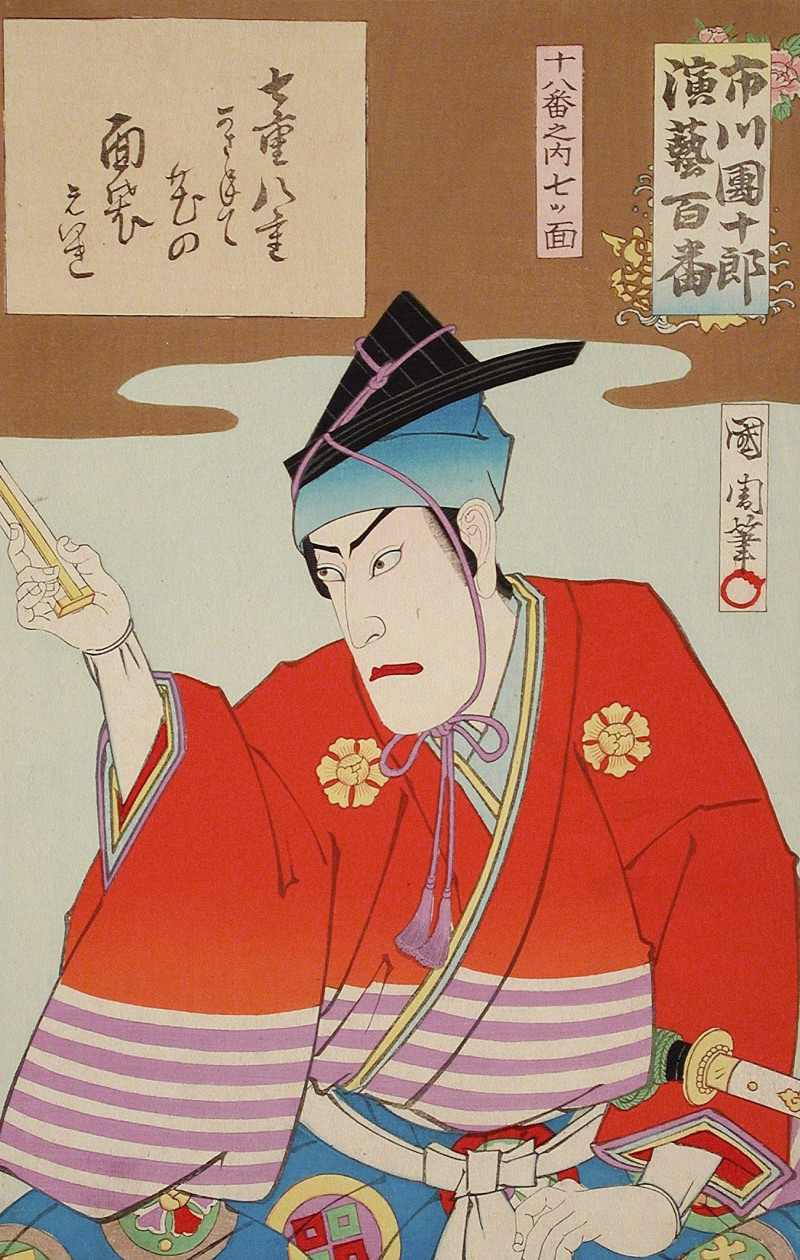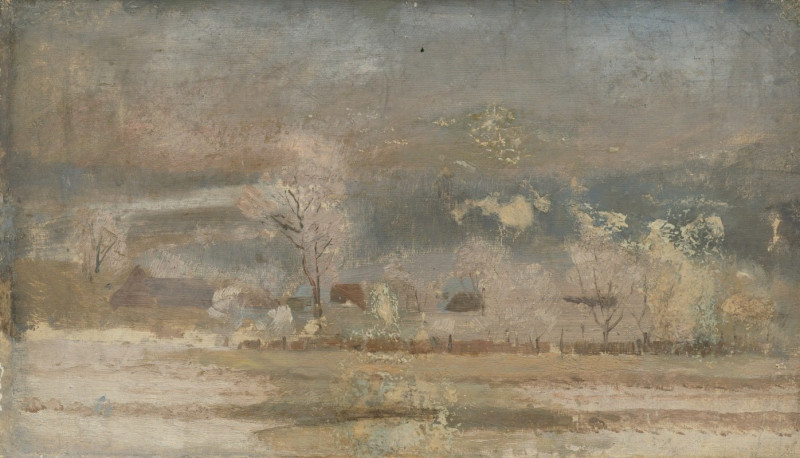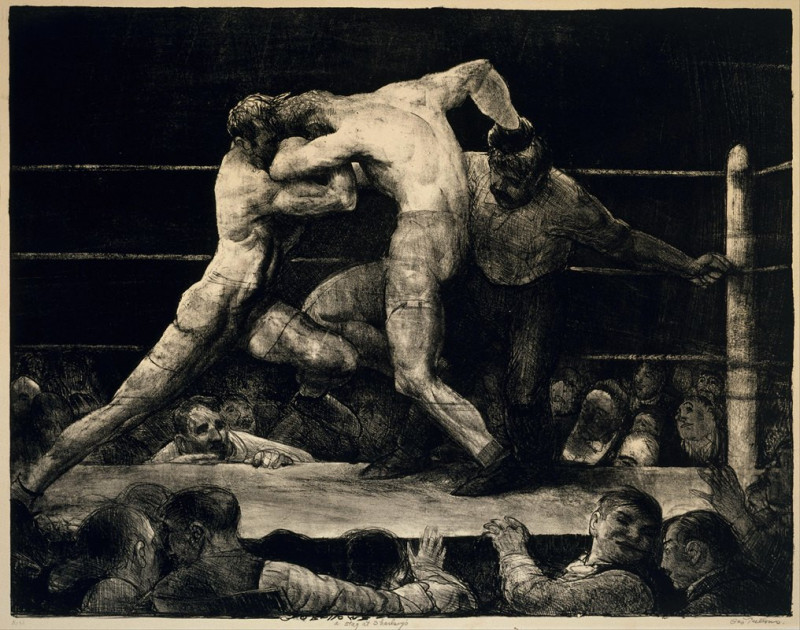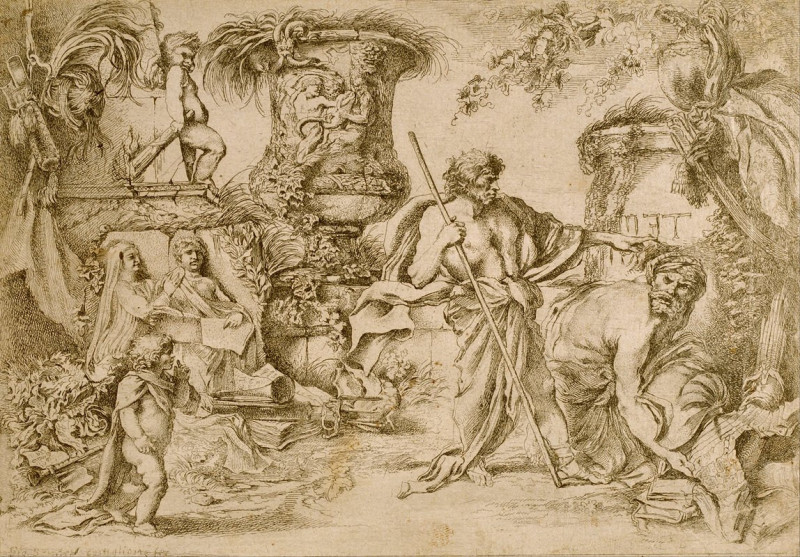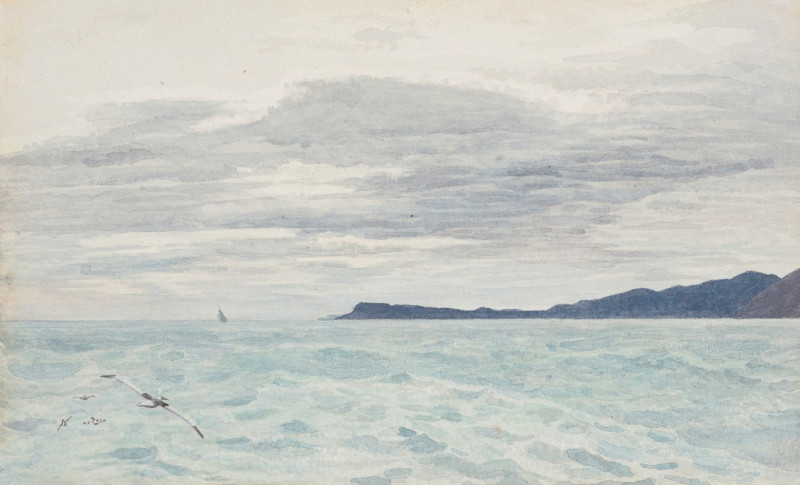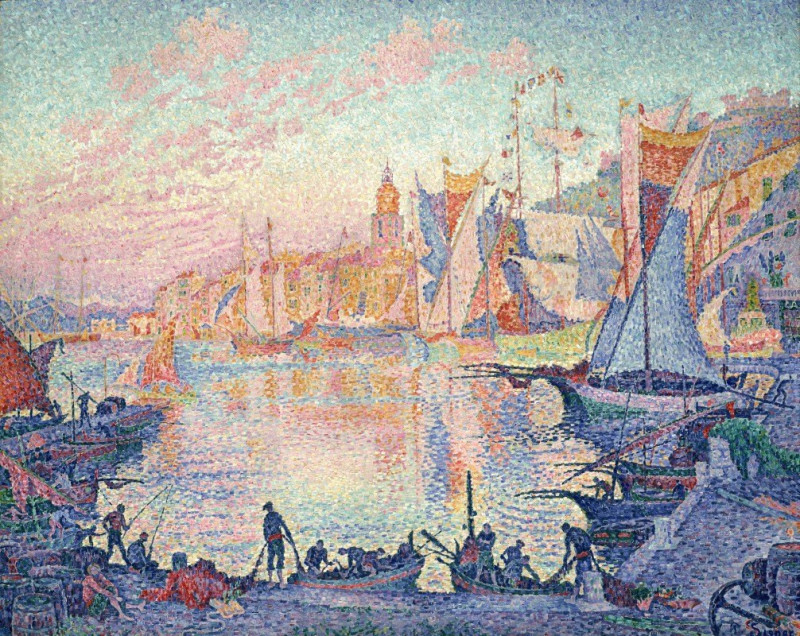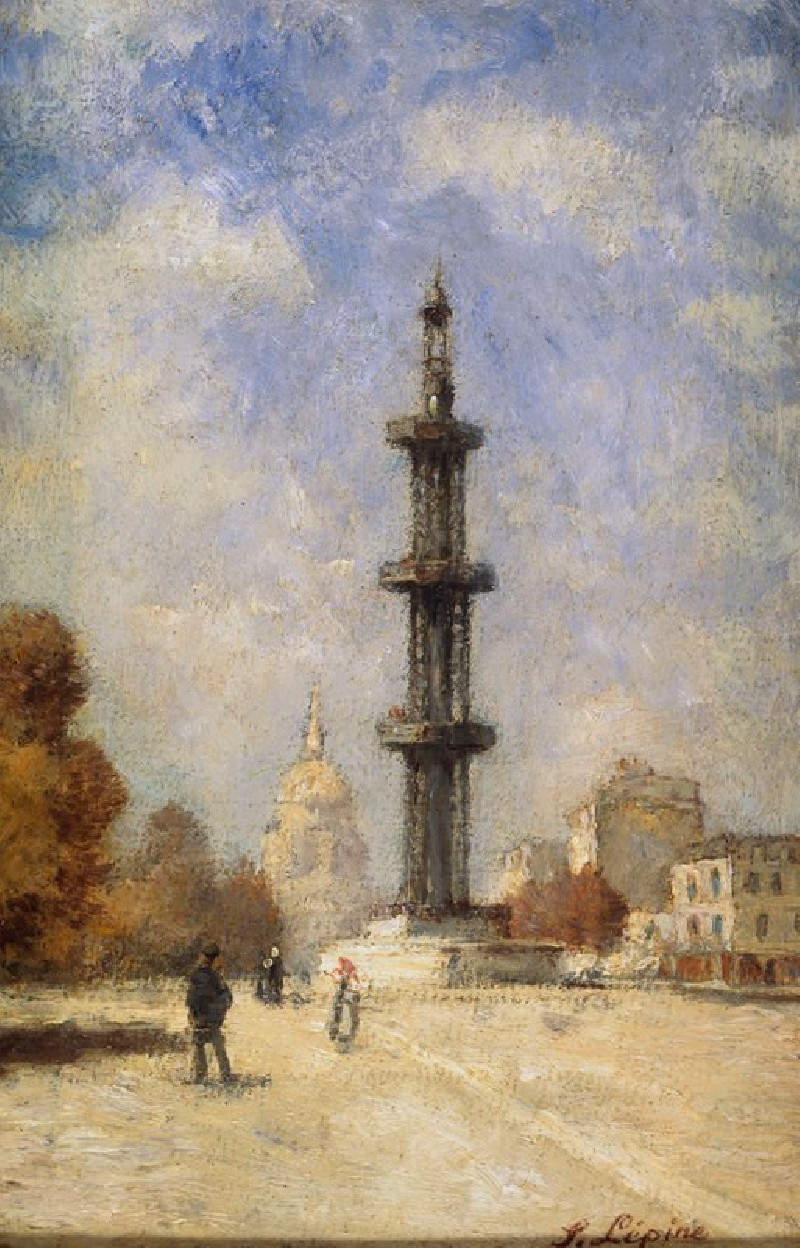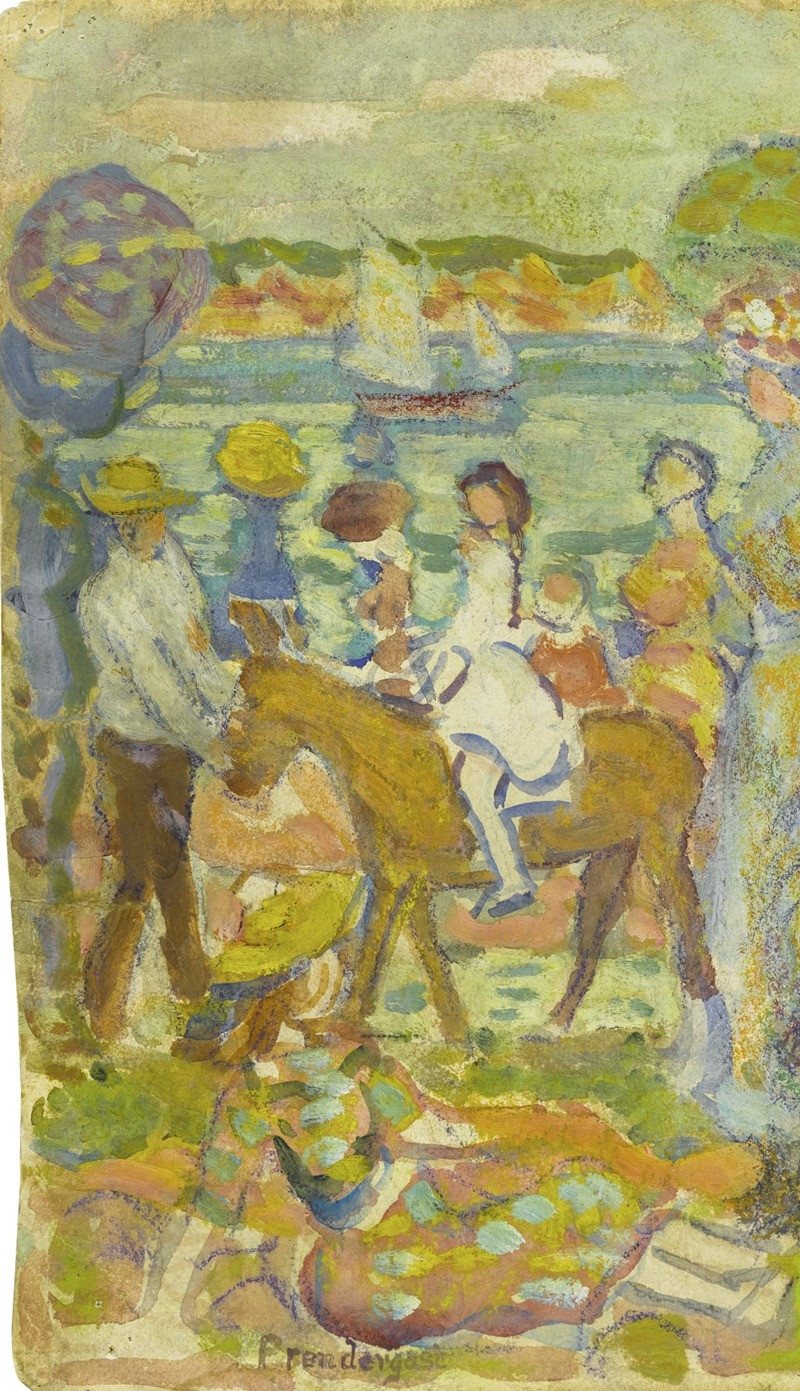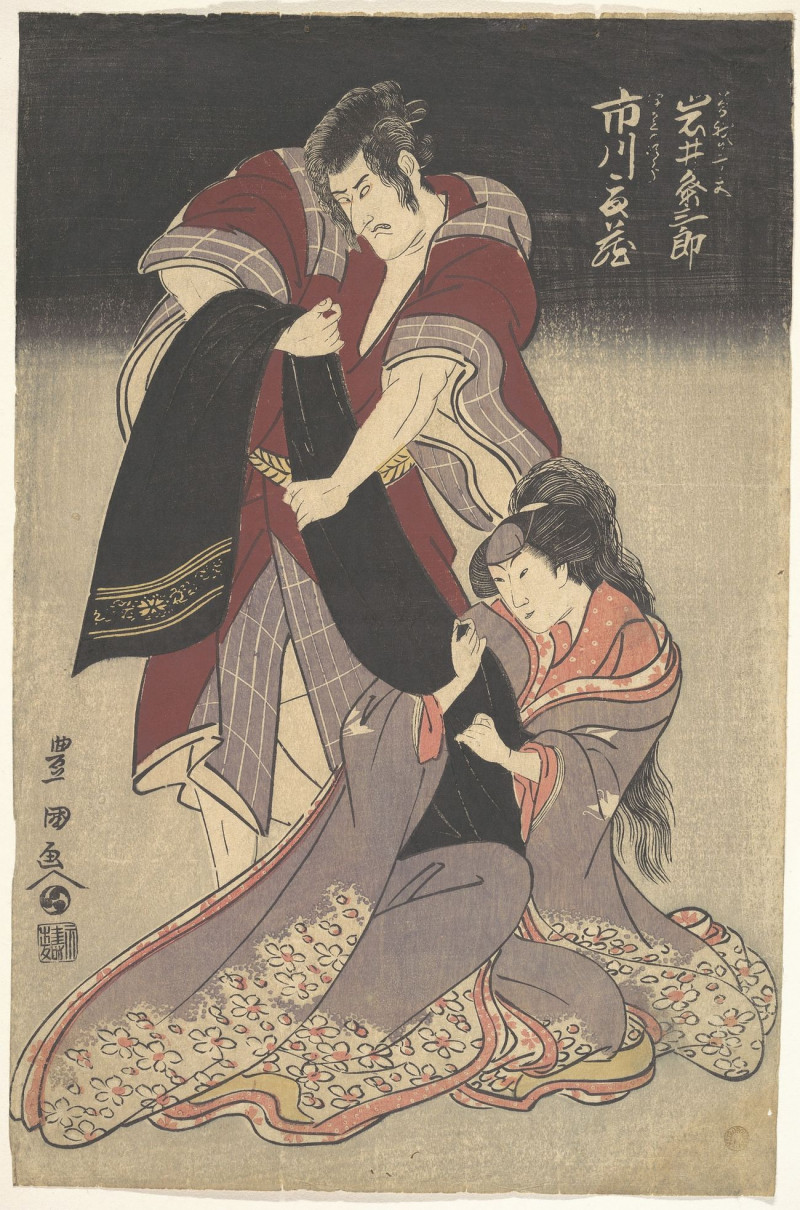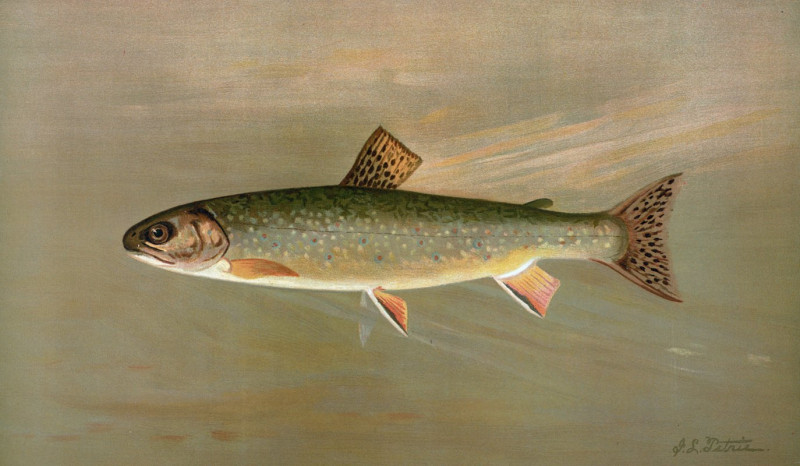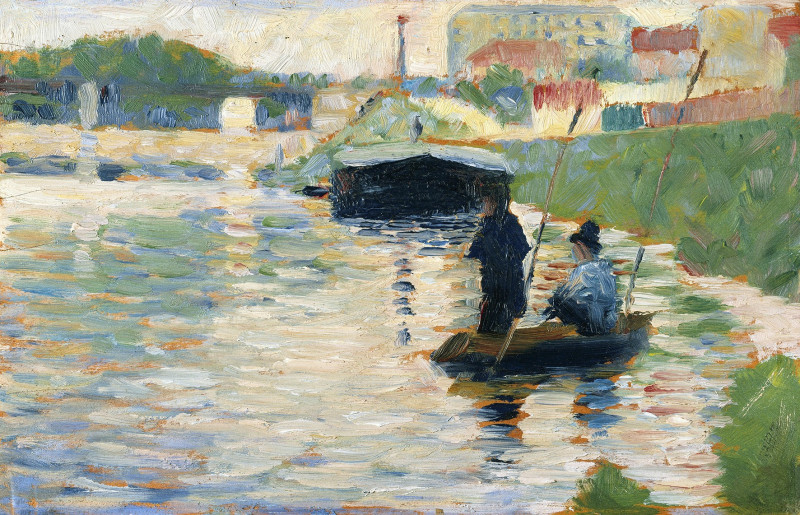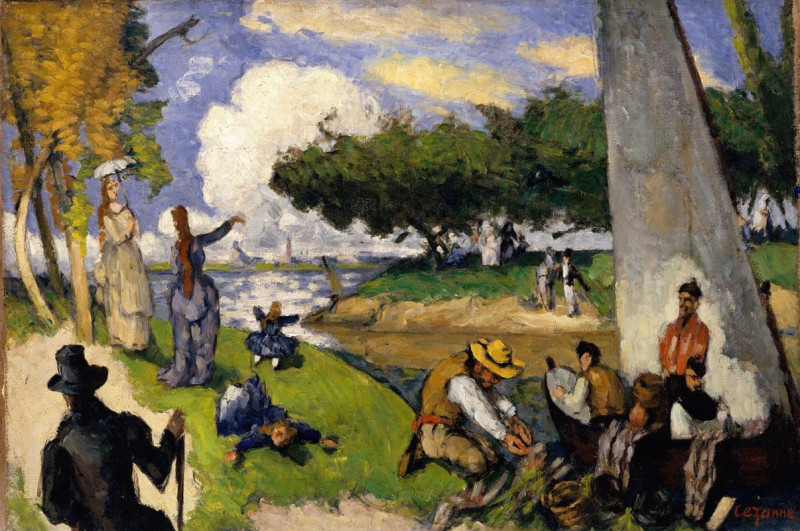A View Near Hampstead (1827)
Technique: Giclée quality print
Recommended by our customers
More about this artwork
This idyllic painting titled "A View Near Hampstead" by John Linnell, created in 1827, captures the essence of rural life during the early 19th century. The scene is set near Hampstead, an area known for its scenic vistas and pastoral beauty, which was a frequent subject for artists during this period.At the heart of this beautifully composed landscape is a bustling, rustic path. The painting shows a family and animals on a country road, enveloped by the lush greenery of towering trees and underbrush. To the right of the composition, a man on horseback and another bending over, possibly tending to chores, suggest daily activities and ongoing labor in the countryside.The focal point of the image is a small group of figures in the foreground—an elderly man accompanied by two children, creating an endearing generational link that adds depth to the narrative of country life. They appear to be traversing the road, possibly returning from or going to a nearby market or another farm. A stream gracefully meanders across the foreground, reflecting the glimmer of the sky, adding a dynamic element to the overall tranquil and harmonious scene.On the left side, the viewer's attention is drawn to rustic cottages that blend seamlessly into the landscape, illustrating the symbiosis between man and nature. These simple, thatch-roofed structures evoke a sense of modesty and simplicity, qualities that are echoed by the unassuming attire and demeanor of the figures within the painting.Linnell's masterful use of light accentuates the rich textures of the trees and buildings, while the vibrant but earthy palette harmonizes the elements of this pastoral composition.
Delivery
Returns
John Linnell was an English engraver, and portrait and landscape painter. He was a naturalist and a rival to the artist John Constable. He had a taste for Northern European art of the Renaissance, particularly Albrecht Dürer. He also associated with Edward Thomas Daniell, and with William Blake, to whom he introduced the painter and writer Samuel Palmer and others.

